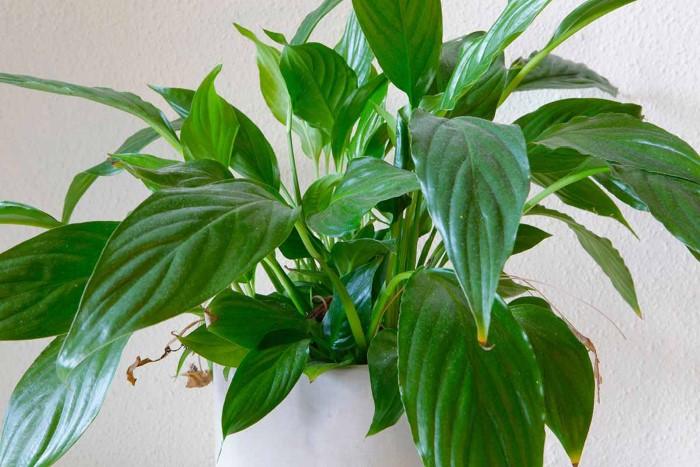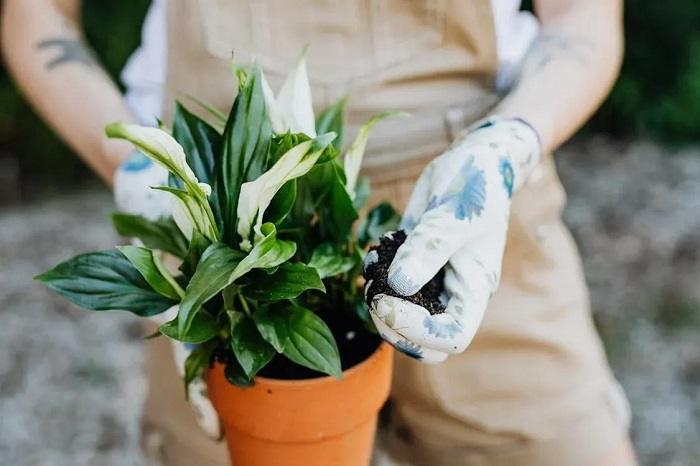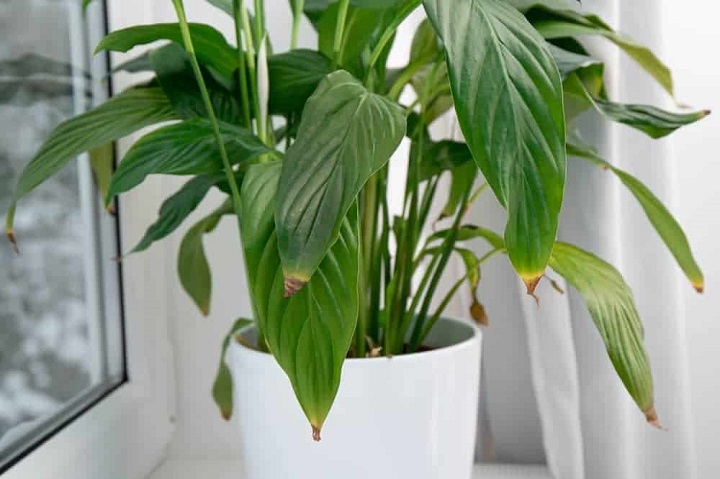Understanding the Peace Lily

Origin and Characteristics
The peace lily is native to the tropical regions of the Americas and Southeast Asia. It thrives in shaded areas, making it ideal for indoor environments. Characterized by its glossy, dark green leaves and striking white flowers, it can grow up to 3 feet tall. The plant is not only admired for its aesthetic appeal but also for its air-purifying properties, making it a perfect addition to homes and offices.
Why Brown Tips Occur
Brown tips on peace lily leaves can be a frustrating issue for plant enthusiasts. Several factors can lead to this condition, including:
- Watering Issues: Both overwatering and underwatering can cause stress to the plant.
- Low Humidity: Peace lilies thrive in humid conditions, and dry air can lead to browning.
- Nutrient Deficiency: Lack of essential nutrients can affect the overall health of the plant.
- Pests and Diseases: Infestations or infections can lead to visible damage.
Understanding the causes of brown tips is the first step toward restoring your peace lily’s health.
Proper Care Tips for Peace Lilies
Watering Your Peace Lily
Finding the Right Balance
Watering is one of the most crucial aspects of peace lily care. The goal is to maintain consistent moisture without drowning the roots.
- Frequency: Water your peace lily when the top inch of soil feels dry. Typically, this might be every 5 to 7 days, but it can vary depending on your home’s humidity levels.
- Method: Water thoroughly until water drains from the bottom of the pot. Ensure excess water is removed from the saucer to prevent root rot.
Signs of Overwatering and Underwatering
- Overwatering: Yellowing leaves, mushy roots, and brown tips are indicators. If you notice these signs, reduce watering frequency and ensure proper drainage.
- Underwatering: Brown tips, wilting leaves, and dry soil are signs. If this occurs, give your plant a good soak and adjust your watering schedule.
Ideal Humidity Levels
Maintaining Humidity
Peace lilies thrive in humid environments, ideally between 40% and 60% humidity. Low humidity can lead to browning tips and droopy leaves.
- Methods to Increase Humidity:
- Misting: Lightly mist the leaves with water a few times a week.
- Pebble Tray: Place a tray filled with pebbles and water under the plant pot. As the water evaporates, it will increase humidity around the plant.
- Humidifier: Using a humidifier can significantly boost indoor humidity levels.
Choosing the Right Soil
Potting Mix for Peace Lilies
Using the right potting mix is essential for healthy root development. A well-draining mix helps maintain moisture while preventing root rot.
- Recommended Mix: Use a combination of potting soil, perlite, and peat moss. This blend provides adequate drainage and aeration.
- Repotting: Repot your peace lily every 1-2 years to refresh the soil and give it more space to grow. Choose a pot that is slightly larger than the current one to accommodate growth.
Fertilization
Nutrient Requirements
Peace lilies benefit from regular fertilization, especially during the growing season (spring and summer). However, over-fertilizing can lead to brown tips.
- Type of Fertilizer: Use a balanced, water-soluble fertilizer diluted to half strength. Look for a formula with equal parts nitrogen, phosphorus, and potassium (N-P-K).
- Frequency: Fertilize every 6-8 weeks during the growing season. Reduce or eliminate fertilization in the fall and winter when the plant enters dormancy.
Managing Environmental Stressors
Light Conditions
Optimal Light for Peace Lilies
Peace lilies prefer bright, indirect light. Direct sunlight can scorch the leaves, while too little light can hinder growth and flowering.
- Placement: Position your peace lily near a north or east-facing window. If the light is too harsh, use sheer curtains to filter the sunlight.
- Signs of Improper Light: If your peace lily’s leaves are turning yellow or brown, it might be getting too much light. Conversely, if the plant is leggy with fewer flowers, it may not be receiving enough light.
Temperature Requirements
Ideal Temperature Range
Peace lilies thrive in temperatures between 65°F and 85°F (18°C to 29°C). Sudden temperature changes or drafts can stress the plant.
- Avoid Extremes: Keep your peace lily away from heating vents, air conditioning units, and drafty windows.
- Temperature Fluctuations: Monitor your indoor climate, especially during seasonal changes, to maintain a stable environment.
Pest Management

Identifying Common Pests
Common Peace Lily Pests
Peace lilies can be susceptible to pests like spider mites, aphids, and mealybugs. Regularly inspect your plant to catch infestations early.
- Signs of Infestation: Look for webbing, sticky residue, or visible insects on the leaves. Yellowing or browning leaves may also indicate pest damage.
Natural Pest Control Methods
Treating Infestations
If you discover pests on your peace lily, act quickly to manage the problem.
- Neem Oil: A natural insecticide that can help control pests without harming the plant. Mix neem oil with water and spray on affected areas.
- Soap Solution: A mixture of water and mild liquid soap can also be effective. Spray the solution on the leaves and wipe them down to remove pests.
- Regular Cleaning: Keep the leaves dust-free by wiping them with a damp cloth. This helps the plant breathe better and discourages pests.
Addressing Brown Tips
Diagnosing the Problem
Evaluating Your Plant’s Condition
When you notice brown tips on your peace lily, assess the overall condition of the plant. Check for signs of overwatering, underwatering, humidity issues, or pest infestations.
- Conduct a Soil Test: If you’re unsure about soil moisture, use your finger to check the dampness below the surface. Adjust your watering schedule accordingly.
Corrective Measures
Steps to Restore Health
Once you’ve identified the cause of brown tips, take the necessary steps to remedy the situation:
- Adjust Watering: Modify your watering routine based on the plant’s needs.
- Increase Humidity: Use one of the methods mentioned above to boost humidity around the plant.
- Prune Damaged Leaves: Trim off any severely damaged leaves to encourage new growth and improve the plant’s appearance.
Propagating Peace Lilies
Propagation Techniques
Dividing Peace Lilies
If you want to propagate your peace lily, division is the most effective method. This can be done during repotting or when the plant becomes root-bound.
- Steps for Division:
- Carefully remove the peace lily from its pot.
- Gently separate the root ball into smaller sections, ensuring each section has roots and leaves.
- Replant each section in its own pot with fresh potting mix.
Care for New Plants
Nurturing New Peace Lilies
After propagation, treat the new peace lilies with extra care to help them establish.
- Watering: Water lightly until the roots develop.
- Humidity and Light: Place them in similar conditions as the parent plant, with bright, indirect light and high humidity.
Caring for a peace lily involves understanding its specific needs and providing the right conditions for it to thrive. By implementing the tips outlined in this guide, you can prevent brown tips and ensure your peace lily remains a stunning centerpiece in your home.
With a little attention and care, your peace lily will flourish and bring beauty and tranquility to your space for years to come. Enjoy the process of nurturing this beautiful plant, and let it thrive as a symbol of peace in your home.







